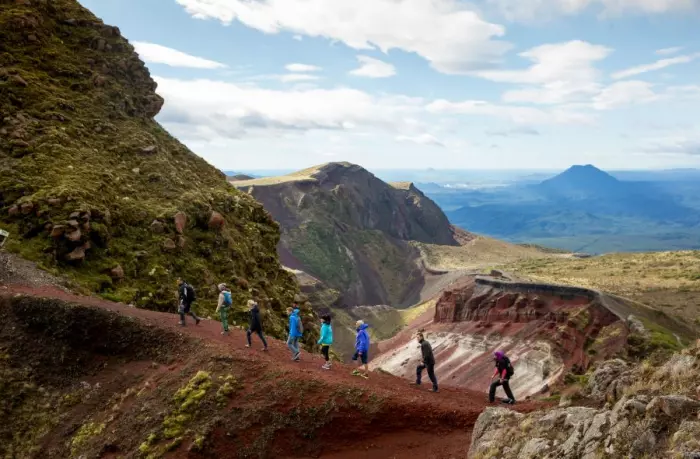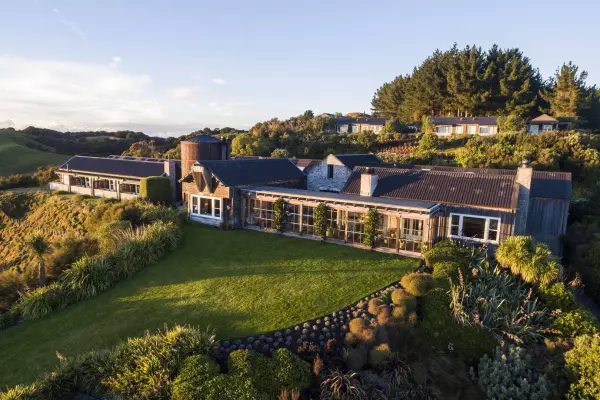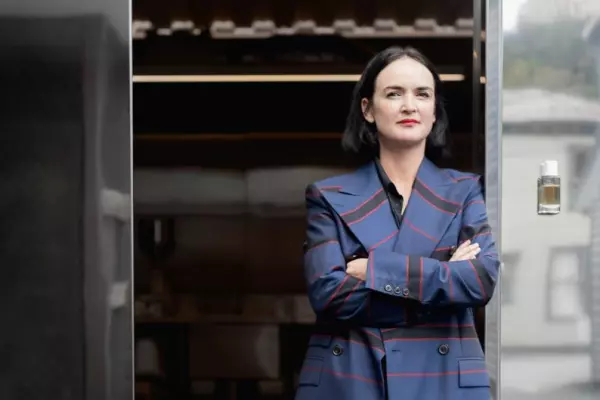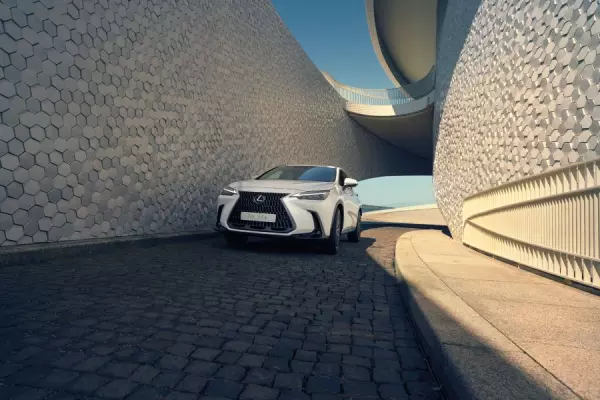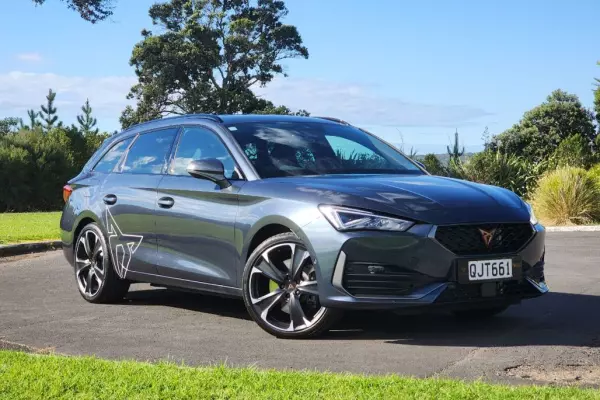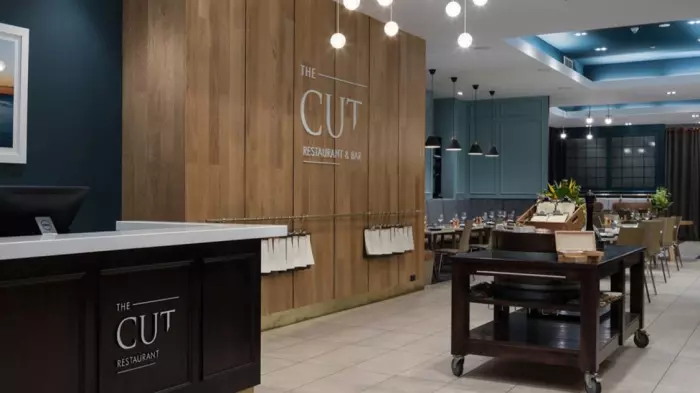On the southern boundary of Lake Rotorua is Whakarewarewa: The Living Māori Village, which started welcoming tourists and sharing mātauranga Māori – knowledge and history – more than 200 years ago.
Located on a geothermal plateau, this is a place that boils and bubbles with more than 500 hot springs and 65 geyser vents, including the famous Pōhutu Geyser, or “the big splash”, which vents 20 times a day and can reach heights of 30 metres.
The village is currently home to about 20 Tūhourangi-Ngāti Wāhiao households and as we follow our guide, Paora, across Te Hokowhitu-a-Tū, the bridge honouring the tribes’ war dead that leads into the village, he stops to show us the thermal stream that flows beneath. “When my grandmother was young, the village children would bathe here and tourists would throw coins in, which the children would collect. Back then, they were called ‘penny divers,’” he says. “Nowadays, we call them ‘gold coin divers’, and only the children who live here at Whakarewarewa are allowed to dive.”
Māori first settled the plateau in the 1300s and ever since, the residents have lived the way of their ancestors, cooking, bathing and heating their homes using the plentiful geothermal resources on their doorstep.
“We’re the only indigenous people in the world who live on geothermal land,” says Paora, as he shows us the communal thermal pools the villagers bathe in daily. Cooking is done in steam hāngī pits and cooking pools, some of which reach temperatures of more than 100C.
The village has its own marae, historic Anglican and Catholic churches, a cafe, and a working tā moko/tattoo artist. As you wend your way around the village, look out for tekoteko – the wooden carvings of warriors and guardians who give protection to the people and the place. Cultural performances telling the stories of the village through song and dance can be booked for groups of more than 15 people.
Once you’ve finished your village tour, it’s worth taking the time to hire an e-bike to explore more of the geothermal landscape around Whakarewarewa and further afield to the Redwood Forest. If you’re wanting to make an afternoon of it, picnic hampers can be pre-ordered for your bike trip.
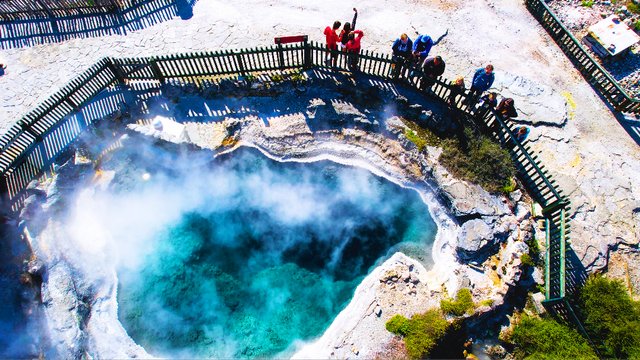 Inside Whakarewarewa Living Maori Village. Photo: RotoruaNZ.
Inside Whakarewarewa Living Maori Village. Photo: RotoruaNZ.
High and mighty
Te Maunga o Tarawera/Mt Tarawera forms part of the Pacific “ring of fire”, and it has seen more than its fair share of tumult. In 1886, it erupted with a force so powerful it ripped a 17km fissure in the earth, burying villages within a 6km radius and destroying the world-famous silica Pink and White Terraces in the process.
Between 1942 and 1944, the maunga served as a base camp for three infantry divisions of the US Army, who put in a road to the summit during their time there. These days the volcano, although active, is quiet and constantly monitored. Access to Tarawera is closed to the public but the kaitiaki (stewards), local iwi Ngāti Rangitihi, allow a select few tour operators onto the mountain. One of these is Kaitiaki Adventures, which offers a 4½-hour guided trip to the summit – and the climb is a life-affirming experience.
Most of the heavy lifting is done thanks to a four-wheel-drive vehicle that takes you to within about 4km of the tallest of the maunga’s three peaks, the Ruawahia Dome. Once your group has offered a karakia, the summit climb begins.
Make sure you take up the guide’s offer of a walking stick – it comes in handy to navigate some of the steeper parts of the track, which is part meander and part hard-scrabble rock climb (you can also fly by helicopter to the summit, but it’s a satisfying experience getting there mostly under your own steam). A moderate level of fitness is needed, although there are plenty of breaks while the guide speaks about the history and geology of the mountain. Make sure you wear good walking shoes and take a jacket – even on a sunny day the temperature drops quickly as you make the summit, 1111m above sea level.
The view is, on a clear autumn afternoon, spectacular – a 360-degree panorama that takes in eight lakes, the peaks of Putauaki/Mt Edgecumbe and Mt Ruapehu, the smoking chimneys of the Tasman Paper Mill at Kawerau, and further out to Moutohora/Whale Island off the Bay of Plenty coast.
But getting up there is only half the fun. The descent involves a “scree slide” where you literally slip-slide your way down the long, steep red-basalt bank that descends into the crater, which – pardon the pun – is a real blast.
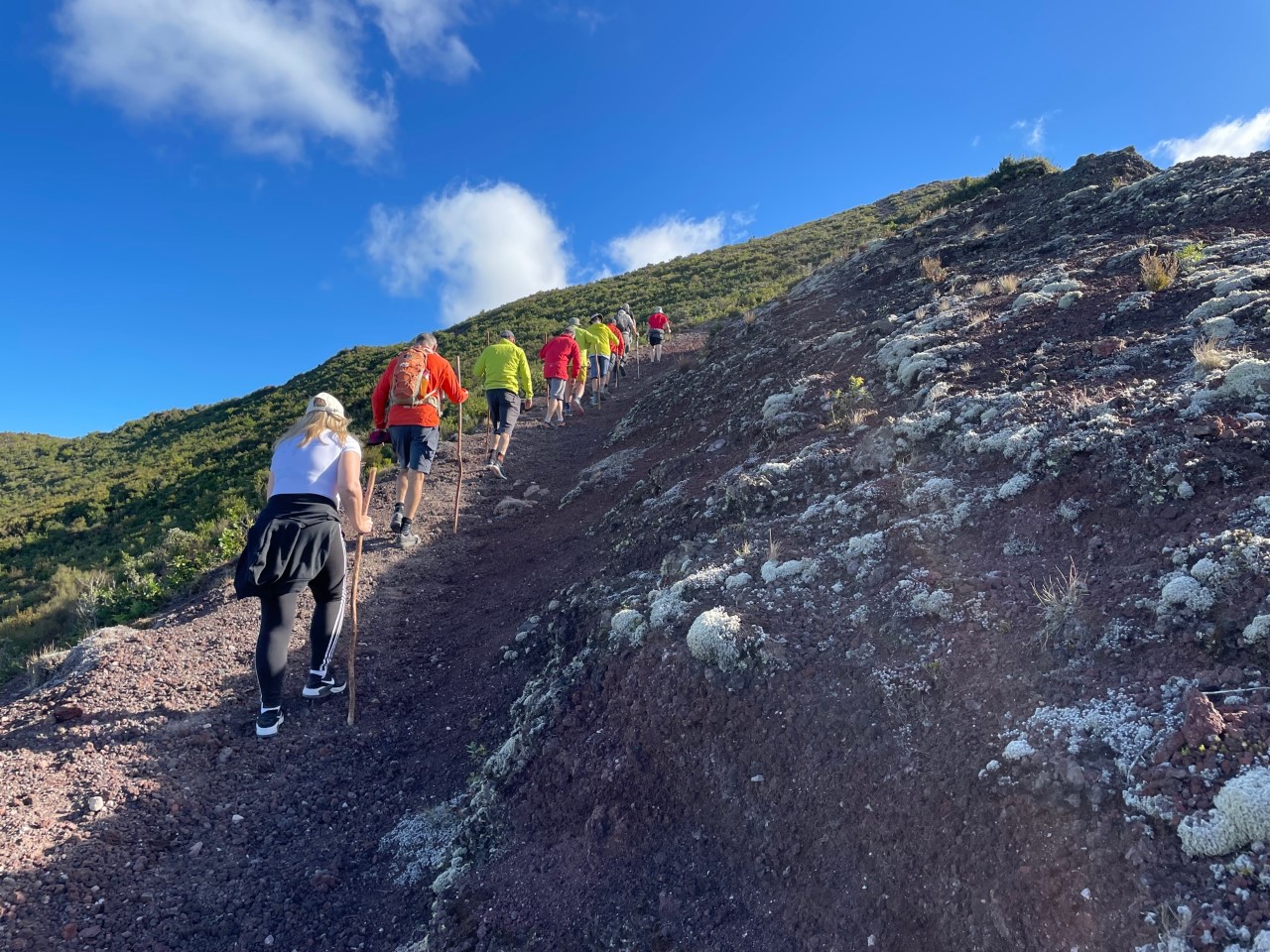 Nearing the summit of Mt Tarawera. Photo: Jacqui Loates-Haver
Nearing the summit of Mt Tarawera. Photo: Jacqui Loates-Haver
Hot stuff
While the Mt Tarawera eruption destroyed the Pink and White Terraces – once looked on as the “eighth wonder of the world” – it did create another geological marvel: Waimangu Valley, the youngest geothermal system on the planet.
Walking the track around this cauldron of a landscape is an education in itself – from the ever-changing colour of the Emerald Pool, which can be green, brown, blue or red, depending on the cycle of the plant life in the water, to the steam-cloaked Frying Pan Lake, the largest hot spring in the world, its edges frilled with shades of green and rust.
Make sure you take the short detour up to the Inferno Lake, which hides a crypto (underground) geyser. It takes about 36 days to fill the lake’s crater to its brim with bright-blue water before it overflows in splendid fashion down a waterfall.
There’s an abundance of flora and fauna to see on this walk, which takes 1-2 hours, depending on which routes you choose to take. At the end of the walk, it’s worthwhile boarding the Lake Rotomahana boat cruise, which visits another 16 points of interest, including the Donne Cliffs, which are formed from hot, red earth.
Download the Waimangu app before you visit; it gives a fascinating insight, via an augmented-reality image slider, into what the landscape looked like in the 1800s, including the Pink and White Terraces and now-extinct Waimangu Geyser, which would reach heights of 450 metres.
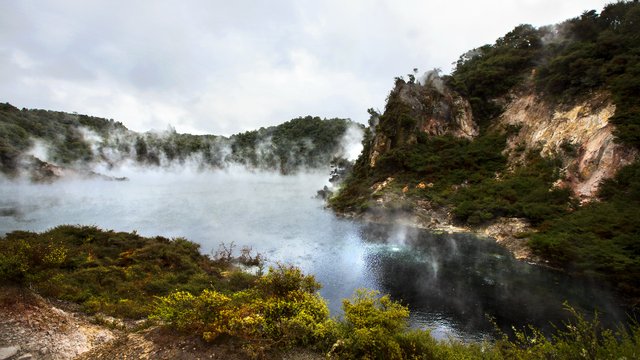 Waimangu Volcanic Valley's Frying Pan Lake. Photo: Waimangu Volcanic Valley.
Waimangu Volcanic Valley's Frying Pan Lake. Photo: Waimangu Volcanic Valley.
Stay and play
Peppers on the Point on the shores of Lake Rotorua is an elegantly restored 1930s mansion, with sweeping terraced gardens, a small private beach and a jetty from which you can fish for rainbow trout. There is a tennis court, if you fancy a hit, and a chapel, if you want to get hitched. But the best thing is the million-dollar view across the lake to Mokoia Island.
BusinessDesk stayed in one of the Lodge Suites – a light, spacious haven with all the mod cons you need, including a multi-jet spa bath for soothing post-hike muscles.
Chef William Foote, former owner of Headquarters restaurant at Auckland’s Viaduct Harbour, serves up a delicious fine-dining menu featuring locally sourced ingredients, fresh vegetables from the lodge’s garden, and homemade ciabatta hot from the oven. You can tuck into a breakfast of eggs from the lodge’s flock of free-range chooks and jam for your toast made from the fruit trees on the property.
You mustn’t leave without taking carrots from the kitchen for Sugar and Milo, the two donkeys who graze on the land that slopes down to the lake. It’ll make their day – and yours.
The author was a guest of RotoruaNZ and Tourism New Zealand.


